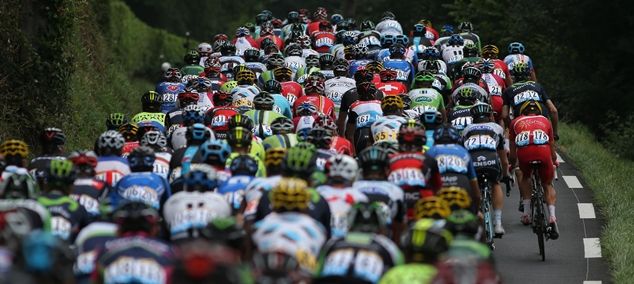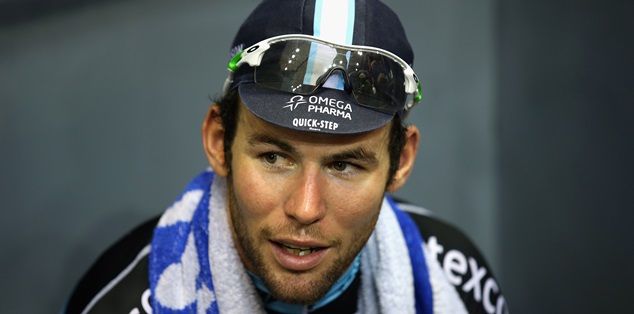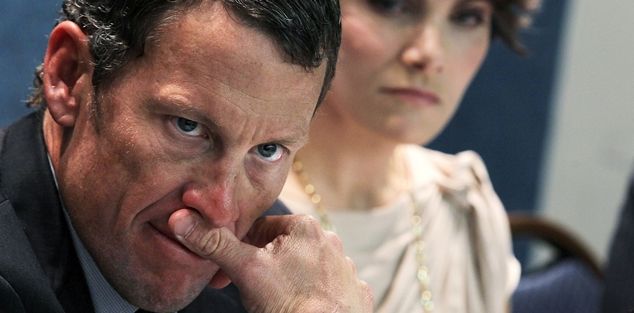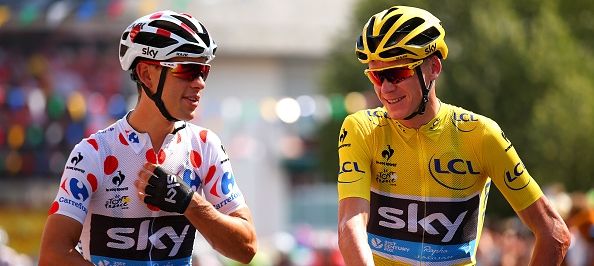By Mark McGowan
On Saturday the riders will roll across the starting line for the 103rd edition of the Tour de France. With a wave of the flag, the starter signals the beginning of three weeks of ecstasy for some, despair for many, and agony for all.
For three weeks the brightly coloured peloton will wind across the nation, through glorious sunshine and pouring rain, along the rugged coast and the wide open plains, up spirit-crushing ascents and down neck-breaking descents, through picturesque mountain villages, across train lines and motorways, and eventually into Paris and onto the Champs Élysées.
The spectacle is worth watching, for the scenery alone, a three-week long advertisement for holidaying in France. And in the midst of all this, there is a race going on. Over 3,500 kilometres in 21 days, a sizeable portion of that up mountains that many vehicles couldn’t manage. In this A-to-Z guide, we’ll guide you through what to expect over the next three weeks.
A is for Abandon
Let’s begin at the end, shall we? Last year, 198 riders began but by the time they rolled into Paris, only 160 remained. That’s almost one in every five riders. For many, just completing the tour is the goal.
B is for Broom Wagon
The tour doesn’t do sentiment. The Broom Wagon is the vehicle which follows the tour and collects those riders who are unable to finish a stage, or who abandon along the way. The tour is over for them, and as such, they are swept up like rubbish.
C is for Champs Élysées
The finish line – but not quite. The riders must complete eight laps of the circuit, around the Arc de Triomphe, before the real finish line appears. Winning the final stage on the Champs Élysées is one of the greatest honours in cycling so the pace is frantic.
D is for Dutch Corner
Nobody loves a mountain stage in the Alps quite like the Dutch. Every year, thousands flock south and set up camp on a corner towards the summit of one of the crucial climbs. Approaching riders are greeted by a sea of orange that greets every rider as if he were their own
E is for Eddy Merckx
The Cannibal, the five-time winner, the greatest ever to sit on a bike and first across the line in 34 Tour stages. Enough said.
F is for Flamme Rouge
On every stage, the Flamme Rouge (Red Flag) signals that the finish line is 1km away. On more flat stages or descents this means that the finish is just a minute away. On the steepest mountain finishes it can signal another seven or eight minutes of absolute torture.
📊 Take a look at the 2016 @LeTour key figures 📊#TDF2016 pic.twitter.com/GJigRa9TVh
— Tour de France™ (@LeTour) June 29, 2016
G is for General Classification
The rider with the lowest overall time wins the General Classification and thus wins the Tour de France. It’s usually a superb climber with a high pain threshold, these guys are remembered and revered for generations to come.
H is for Huez
Huez is a small ski resort in the French Alps. L’Alpe d’Huez is one of the most iconic climbs of the tour. Although not featured in this year’s edition, the climb – which features 21 hairpin bends – has been the battleground on which many tours have been won and lost.
I is for Irish Interest
Daniel Martin and Sam Bennett will be the only Irish riders in the race. Bennett is a sprinter, while Martin is a climber. Although a stage win is the likely target for both riders, Martin is capable of securing a top 10 placing overall. Martin’s uncle Stephen Roche was the last Irish rider to finish in the top 10, recording a ninth place finish in 1992.
J is for Jerseys
Each team in the tour (21 this year) have their own jerseys and colours. Add to that the yellow, green, white and polka-dot jerseys awarded by the tour, and the world and national champion jerseys worn by the respective riders and you have a kaleidoscopic swarm streaking through the French countryside.
K is for King of the Mountains
The Polka-dot jersey is awarded to the leader in the King of the Mountains classification. Points are awarded for the first three riders over certain peaks throughout the race, with mountain top finishes worth more than any others.
L is for Lantern Rouge
Lantern Rouge (Red Light) is the name given to the competitor in last place on the general classification. Usually a rider who is struggling on every stage and whose only target left is to beat the time-limit each day and complete the race.
Looking forward to watching the Tour de France? #TDF2016 route & info here: https://t.co/3CX8Hc9RX2 via @LeTour pic.twitter.com/7raX5DqsKu
— Underdog Cycling (@underdogcycling) July 1, 2016
M is for Mountains
Where the tour is won and lost, where heroes are made and where spirits are crushed, where screaming crowds gather in their thousands, where vivid pain is painted on the canvased faces of many riders. Where the tour really begins.
N is for No Fear
As steeply as mountains go up, they come back down again – as do the riders. Often reaching speeds of 100km per hour, with just thin rubber and lightweight steel separating the riders from the tarmac. Where a pothole, an oil slick, melting tarmac, or a puncture could mean the end of the tour, the end of a career, or even the end of a life.

O is for Off the Back
That sinking feeling as the pace is upped and you can’t respond. As you see the riders in front of you begin to distance you. The distance grows, until eventually they disappear.
P is for Parade Caravan
Roughly an hour before the riders pass through, come the PR wagons. Like floats at a parade, the passing carnival is brightly coloured, entertaining and goodies are thrown to the crowds. If you have a hankering for some jellies then your luck is in.
Q is for Queen Stage
The Queen Stage is the toughest stage of the entire race. With a profile usually resembling a saw blade, for any rider who is struggling, the Queen Stage arrives with all the welcome of the first day back at work after Christmas.
R is for Rest Day
There are two rest days in the tour, and usually are preceded by a very tough stage. You might think that the riders would spend all day in bed, but they actually go out for a lengthy cycle in order to avoid their legs seizing up.
S is for Sprinters
The fast men, the guys who will come to the fore in the bunch finishes. These riders (such as Mark Cavendish above) will likely stay in the peloton until the final few hundred metres of a stage before making their move. These are usually big, powerful riders who don’t like the mountains.
T is for Teamwork
No rider can win the tour without the help of their team. The team leader is sheltered from the wind by his teammates, has extra water carried by them, will be given a wheel or a bike if necessary by them, and should he drop off the main bunch for any reason, they will drop with him and pace him back.
U is for Under the Influence
No sport has been more synonymous with doping than cycling, and it’s no wonder given the stamina and pain threshold required. Cycling may never fully recover from the tarnishing its reputation took throughout the Lance Armstrong years and in the subsequent investigations.
V is for Ventoux
Another one of the Tour’s iconic climbs is Mont Ventoux. Famous for its almost lunar-like landscape and infamous as the death place of cyclist Tom Simpson, who collapsed whilst climbing during the 1967 Tour. Mont Ventoux will be the finish line of stage 12 this year.
W is for Winners
Everybody who completes the eighth lap of the Champs Élysées is a winner. Period. Some will have won more than others, but sincere respect is deserved by anybody who undertakes and completes the most grueling race of them all.
X is for X-Rays
X-Rays have been part and parcel of the tour for generations now. Broken collarbones are to cyclists what a hamstring strain is to a footballer, however, bikes are now being x-rayed in order to prevent mechanical doping from taking place.
Y is for Yellow
The race leader, resplendent in yellow. As much a symbol of the race as the bike itself. Initially the race leader wore a green armband, but the race sponsors L’Auto decided that the leader should wear a yellow jersey to match the yellow pages on which their newspaper was printed. The rest is history.
Z is for Zombie
Zombie: A person who is or appears to be lifeless. This is just about every rider as they hit the bed following completion of the tour. Unlike real zombies though, this state is temporary, and most will be back on the bike in a day or two.





















































